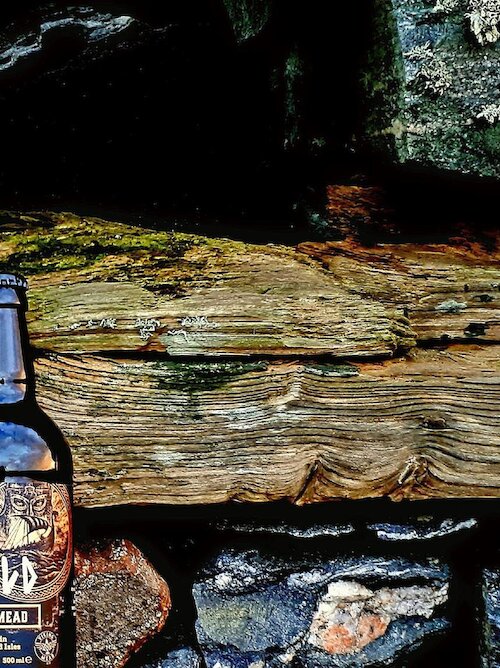Shetland used to be part of Scandinavia until it joined the UK in the 15th century, so it has unique history, folklore, music, literature, dialect and place names. Its food and drink draws on this heritage, so is quite unlike anything anywhere else in Britain. Here is a sample of specialities to try from one of the world’s most stunning island destinations.
Shetland is famous for its seafood industry - it lands more fish than the whole of England, Wales and Northern Ireland added together. So it’s hard to pick out just two examples for our Top 10…
Mussels
Shetland successfully produces rope-grown mussels, with thinner shells and a higher meat content than mussels from the sea bed, due to the pure, clean water which is rich in feed. The Shetland mussel industry is worth £5.1 million to the local economy and has been built on its outstanding reputation for quality. You can sample Shetland mussels at the famous, award-winning Frankie’s Fish and Chips located in Brae on the shores of Busta Voe, Busta House Hotel also in Brae, at Fjara cafe , The Dowry, The String and C'est La Vie all in the heart of Lerwick and Scalloway eateries the Scalloway Hotel and Da Haaf. The mussels at the mentioned outlets are supplied by SSMG . Try Manju's Mussels in a coconut and curry leaf sauce. A healthy delicate mussel curry.
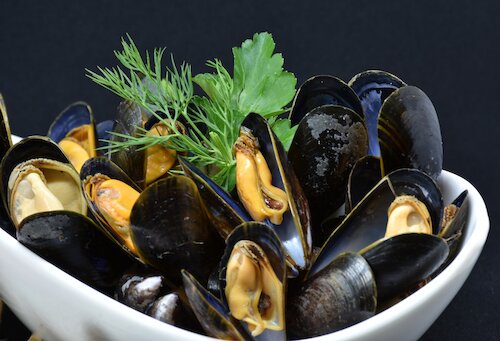
Salt cod
Artisan producer, Thule Ventus , produces air-dried salt cod. Salt cod is a traditional way of preserving fish and is popular in countries like Spain and Portugal too. Before cooking you need to soak the fish in water for 24 hours (or as directed in the recipe you are following). This draws out most of the salt and leaves a delicate and unique flavour and texture. Some people eat the salt cod as it is, but most use it in fish cakes or cod paté (Brandade de Morue). The traditional way is just to have with potatoes and butter. The fish for Thule Ventus are landed by local boats at the Lerwick or Scalloway fish markets in the early hours of the morning, and all the cod is MSC-accredited sustainable. Click here to find great recipes made with Thule Ventus salt cod.
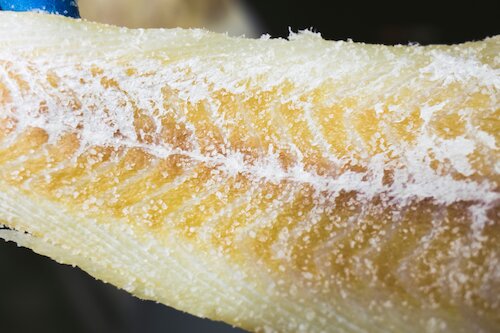
Shetland’s unique environment provides not only gives a distinctive flavour for meat from livestock which graze there, but livestock also plays an important role in conservation grazing which helps maintain biodiversity.
Reestit mutton
Reestit mutton is now produced solely in Shetland and reflects the influences from Scandinavia on the islands where similar techniques are used for preserving meat in this way. The mutton is produced from a sheep of 18 months or older. Reestit mutton is a key ingredient of many favourite dishes today cooked at home, and both Anderson Butchers and the Scalloway Meat Company make and sell reestit mutton. Traditionally it is eaten with Taatie Soup, in broths or in pies, or eaten cold in a Shetland bannock, particularly in the winter months in the season of Shetland’s Viking Fire Festivals. You may also find the following cafes and restaurants with Reesit on the menu: The Scalloway Hotel in Scalloway, Frankies Fish and Chips in Brae, Busta House Hotel in Brae, C'est La Vie in Lerwick, Caffe Volare at Sumburgh Airport, Fjara in Lerwick, Lj's Diner in Yell, Mackenzies Farm Shop and Cafe in Cunningsburgh, The Peerie Shop Cafe in Lerwick, The Scalloway Hotel in Scalloway, The String in Lerwick, Speldiburn Cafe in Bressay, Da Haaf in Scalloway and The Dowry in Lerwick. You may also find Reesit in some local shops such as, Bigton Shop , Brae Garage , Mainlands Mini Market , Sound Service Station , Scoop Wholefoods , Tagon Stores and Hillswick Shop . You can buy this Shetland delicacy in our online Shop .
Why not try a Reesit Mutton recipe courtesy of Marian Armitage. Find the recipe here .
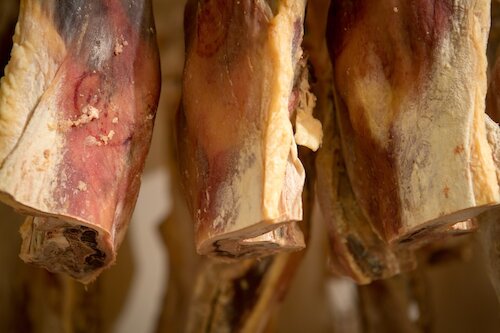
Native Shetland beef
There is a relatively small amount of native beef produced in Shetland but it is worth seeking out for a truly authentic flavour as well as supporting those who are maintaining the survival of this breed. The animals are smaller so the cuts can be different but the meat is succulent, delicious and tender. Most of the Shetland-produced meat sold locally however is now not exclusively bred from native cattle. The animals generally spend the long summer days outside then go inside for the winter, and produce excellent meat which is full of flavour. Native Shetland beef can be purchased at Anderson Butchers and the Scalloway Meat Company . You may also see Native Shetland Beef on the menu at the following cafes and restaurants in Shetland: Caffe Volare , C'est La Vie , Da Steakhouse , Fjara , Frankies Fish and Chips , Lj's Diner , Mackenzies Farm Shop and Cafe , Peerie Shop Cafe , Scalloway Hotel , The String and The Dowry. Producers of Native Shetland Beef include GB and AM Anderson , Uradale Farm in Scalloway and Gremista Farm in Lerwick.
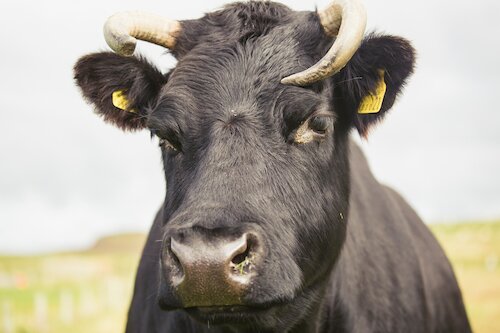
The baking tradition in Shetland - from savoury to sweet - remains strong, and visitors will find that they can get the chance to go to a ‘Sunday Teas’. These community fund-raising events are usually organised by local country hall committees across Shetland, and are a popular Sunday afternoon activity.
Oatcakes
Oats are a cereal that grows well in Shetland. For centuries it has been ground to provide cereal for baking in various grades as well as making porridge. Oatcakes (Oaties) are made and sold both in Shetland and beyond. Traditionally oatcakes were made with lard or bacon fat, but butter is now popular. On Unst, Skibhoul Bakery makes oatcakes using sea-water, with a coarse or fine oatmeal, and also with chilli. Meanwhile on the south side of Shetland's West Mainland Waas Bakery’s Oaties are baked to their original recipe, and a range of flavoured options including wholemeal, honey and bran. South of the capital Lerwick, the Sandwick Baking Company is a shop and bakery situated in the village of Sandwick which also makes traditional oatcakes. They can be eaten with a choice of savoury or sweet toppings, depending on your preference. Da Voe Bakery also offers a delicious range of oatcakes which are worth sampling. You can buy local oatcakes from many places accross Shetland including: Bigton Shop , Brae Garage , Hillswick Shop , Mainlands Mini Market , Scoop Wholefoods , Sound Service Station and Tagon Stores .
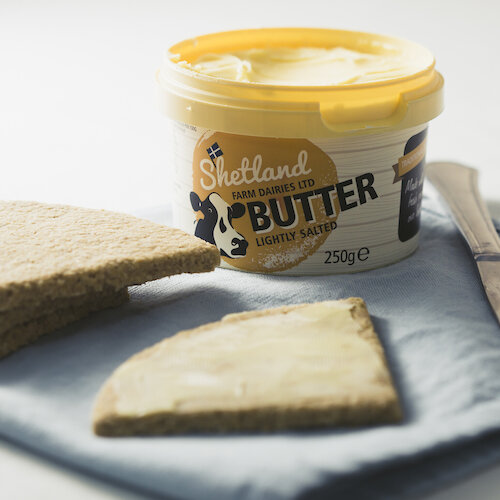
Beremeal
Beremeal is a traditional Shetland cereal. Although it is not grown on a commercial scale in Shetland, you can buy beremeal from Scoop Wholefoods in Lerwick who also distribute to over 20 country shops. Bere (Hordeum Vulgare) is a six-row Spring barley which dates back to the 8 th Century. It is used in the brewing industry and when ground into beremeal makes delicious, wholesome bannocks. A bannock is similar to a scone in texture but is more savoury in taste. It is usually cooked on a griddle rather than in the oven. This gives it the traditional browned crisp crust on either side. Whether oven or griddle baked, bannocks are consumed in quantity and, produced by all the bakeries in Shetland as well by hundreds of households – most have their own special recipes. You will want to take a filled bannock with you if you are off exploring or wildlife watching. The most northerly Food Blogger Elizabeth's Kitchen Diary uses Beremeal in a lot of her recipes. Here you can see a fabulous Beremeal Loaf.
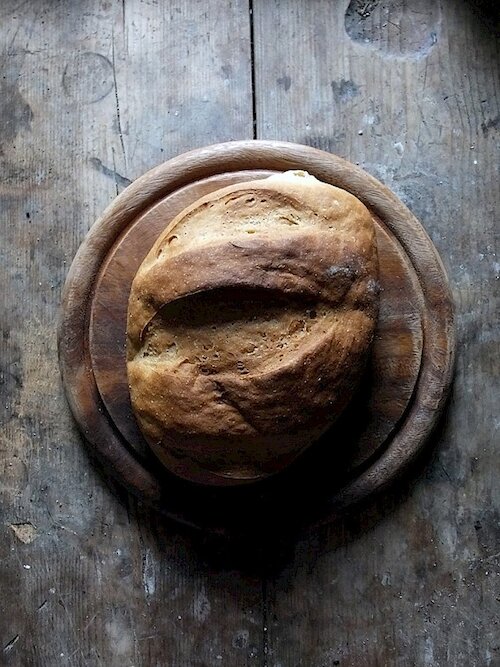
In the past, most people in Shetland with a croft or a small piece of land would have grown basic vegetables such as neeps, tatties and kale. Today, many folk have polycrubs - a tougher Shetland version of a polytunnel - and surplus produce is frequently sold in shops that sell locally-grown fruit and vegetable s.
Shetland Black potatoes
The ‘Shetland Black' is a heritage potato that, as the name suggests, was originally grown in the Shetland Islands. It is not known exactly when it was introduced, but it was added to the National Collection in 1923. It is a second early potato and produces lots of small-to-medium size oval tubers. The potatoes are floury in texture and so make excellent chips or roast potatoes and are much prized by chefs around the UK. A “Forgotten Food” and registered with Slow Food UK, the Shetland Black is currently available as a seed potato from heritage seed suppliers, or from specialist growers.
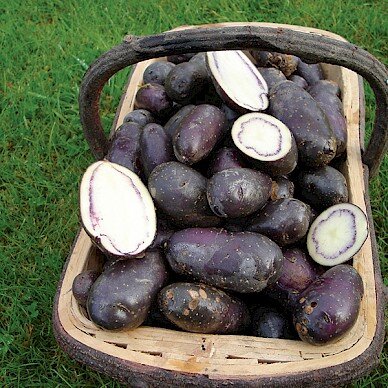
Rhubarb
In Shetland, cooking with rhubarb has a strong tradition as it grows really well. Rhubarb seems to grow in every garden and you will often find it around old abandoned croft-houses. Probably because it grows far better than anything else in these windswept islands, it formed an important part in the Shetland diet. In Marian Armitage’s book “Shetland Food and Cooking” , there are some great rhubarb recipes. These include a special Shetland combination – Mackerel with Rhubarb, along with Rhubarb Chutney and Rhubarb and Ginger Jam. You can buy Marian’s book at www.tasteofshetland.com/shop .
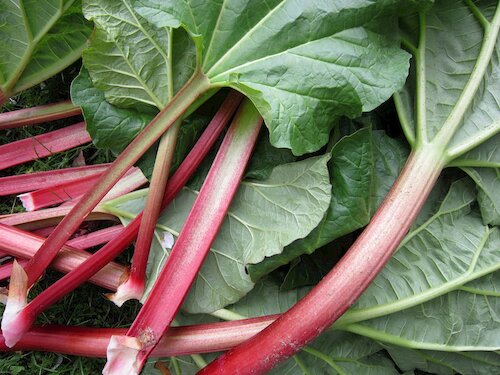
While rhubarb is also an ingredient for homemade Rhubarb Hooch (rhubarb, sugar and rum/vodka), Shetland has seen a relative boom in its drinks industry in recent years. Popular with visitors sampling at the recent Taste of Shetland Festival and Pop-Up Market were the locally-produced gin and mead.
Gin
The Saxa Vord Distillery , the most northerly in the UK, was started by four people sharing a passion for producing top quality products in local communities. Produced in Shetland’s only distillery, Shetland Reel Gins are made where the North Sea meets the Atlantic Ocean and are now receiving international recognition. The gin recipes include juniper berries, coriander seeds, orris root, cinnamon and citrus peel, but add a unique Shetland twist with locally harvested Apple Mint and Bladderwrack Seaweed. You can buy Shetland Reel Gin from a range of outlets and restaurants in Shetland including: Bigton Shop , Brae Garage , Busta House Hotel , Da Steakhouse , Fjara , Hillswick Shop , Mainlands Mini Market , Scalloway Hotel , Sound Service Station , Tagon Stores , The String and The Dowry.
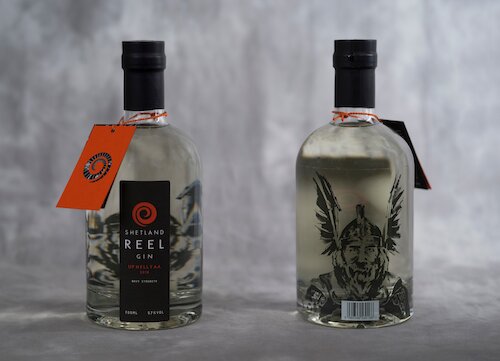
Mead
A drink closely associated with Shetland’s Viking heritage, and said to be one of the world’s oldest known alcoholic drinks, mead is currently made in small quantities in Shetland by Alistair and Debbie Morgan who founded Viking Mead . Made from fermented honey and water, the alcohol content of mead generally ranges between eight and 20 per cent and it may be still or carbonated. As it is made from honey you can add a range of different botanicals or flavours, and Alistair enjoys experimenting - adding hops, malt or fruit are all options he has tried.
